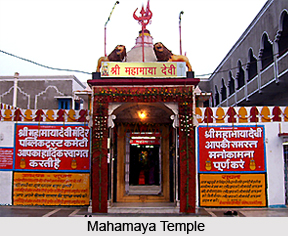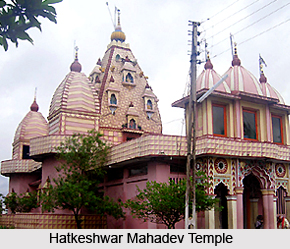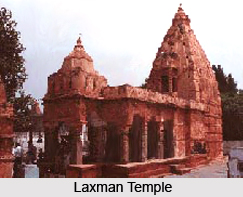 Raipur is the capital city of the state of Chhattisgarh and its administrative headquarters are located at Raipur District. It was previously a part of Madhya Pradesh before the state of Chhattisgarh was formed on November 1, 2000. There are several temples of Raipur. Some of them are:
Raipur is the capital city of the state of Chhattisgarh and its administrative headquarters are located at Raipur District. It was previously a part of Madhya Pradesh before the state of Chhattisgarh was formed on November 1, 2000. There are several temples of Raipur. Some of them are:
Girodhpuri
Located about 135 km from Raipur, Girodhpuri is a pilgrim centre in Raipur District of Chhattisgarh. It is famed as the birth place of the great Satnami saint Ghasidas, who fought against social evils and advocated social equality and development.
Bhand Dewal Temple
Bhand Dewal Temple, a dilapidated Jain temple, is situated at Arang in Raipur District of Chhattisgarh. Arang is about 30 km from Raipur. This five-storeyed temple is assignable to the late 11th century Bhumija style. It interprets the Bhumija mode in the regional Kalachuri style, having ornate lofty minaret and two bands of sculptures on the wall. The temple is on plan with six offsets.
 Kuleshvara Mahadeva Temple
Kuleshvara Mahadeva Temple
Kuleshvara Mahadev Temple is one of the prominent shrines at Rajim, in Raipur District of Chhattisgarh. The inscriptions that date back to the periods of Somavanshis, Nalas and Kalchuris can be found here. Uniqueness is that the temple is situated on an island. According to local populace, the temple formerly located in the mainland, which was severed by the river.
 Rajivalochana Temple
Rajivalochana Temple
Rajivalochana, literally means "the beautiful-eyed one", is one of the important shrines at Rajim, Raipur District, in Chhattisgarh. The presiding deity is Lord Vishnu. The temple boasts 12 pillars, on which the figures of Goddess Durga, Lord Vishnu, Lord Rama and Lord Narasimha are exquisitely sculpted. It is a fine example of Mahakosala architecture.
Dudhadari Temple
Dudhadari Temple situated near the Burha Talab, stands the 500-year-old Dudhadari Temple, which has elaborate carvings. The temple is dedicated to the Lord Rama. In Raipur City, one of the most famous temples is known as the Banjari Mata Mandir which was established by Shree Harish Joshi. The folklore has it that Mr. Joshi found a place where a stone looked like an idol of Banjari Mata. Upon discovering the idol, he started worshiping the idol and hence attracting attention of the public.



















